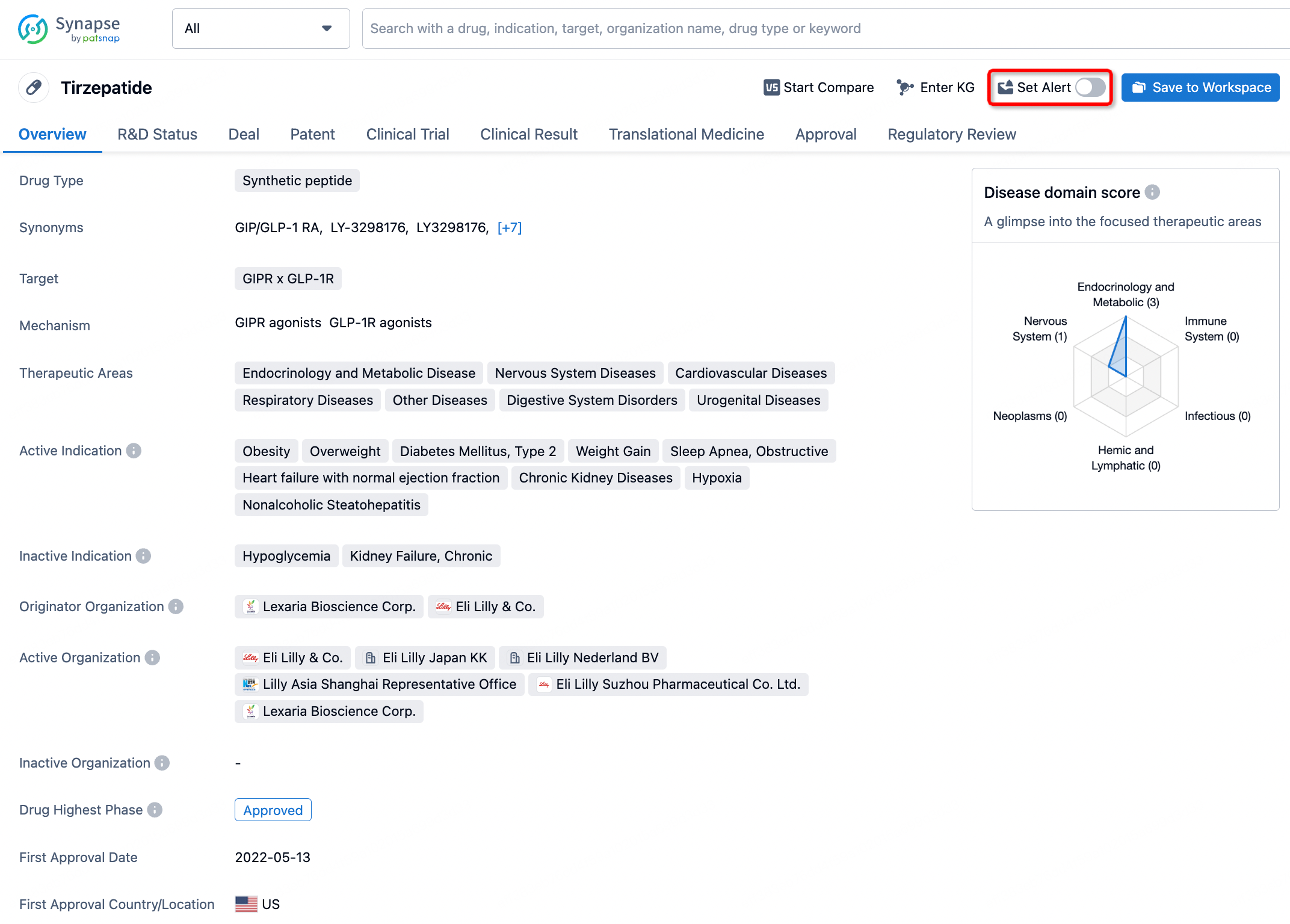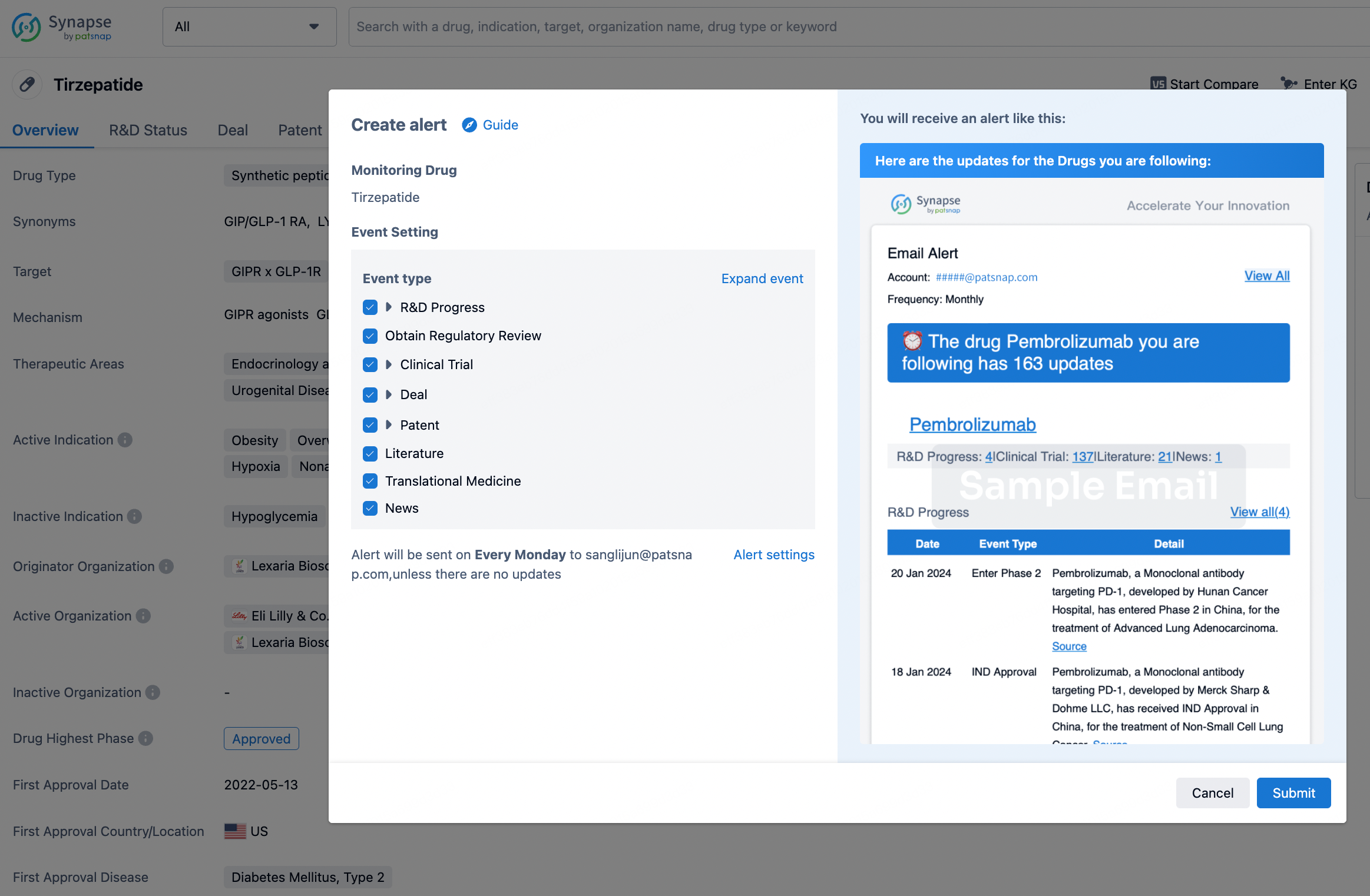Request Demo
What is the mechanism of Levomepromazine?
18 July 2024
Levomepromazine, also known as methotrimeprazine, is a medication primarily used in the field of psychiatry and pain management. It belongs to the class of conventional antipsychotics known as phenothiazines and exhibits a wide range of pharmacological activities. In this blog, we will explore the mechanism of action of Levomepromazine to understand how it exerts its effects in the human body.
Levomepromazine's mechanism of action is multifaceted, and its therapeutic effects arise from its ability to interact with various neurotransmitter receptors in the brain. The primary mechanisms include antagonism of dopamine receptors, serotonin receptors, histamine receptors, alpha-adrenergic receptors, and muscarinic receptors.
1. **Dopamine Receptor Antagonism**: One of the primary mechanisms by which Levomepromazine works is through the antagonism of dopamine receptors, particularly the D2 receptors. Dopamine is a key neurotransmitter involved in the regulation of mood, behavior, and psychotic symptoms. By blocking these receptors, Levomepromazine reduces the effect of dopamine in the brain, which helps alleviate symptoms of psychosis such as hallucinations and delusions. This dopamine antagonism also contributes to the drug’s sedative and antiemetic properties.
2. **Serotonin Receptor Antagonism**: Levomepromazine also exhibits antagonistic activity at various serotonin receptors, including 5-HT2A and 5-HT2C receptors. Serotonin is another crucial neurotransmitter involved in mood regulation and various other physiological processes. By blocking these receptors, Levomepromazine can help manage mood disorders and anxiety, contributing to its overall antipsychotic efficacy.
3. **Histamine Receptor Antagonism**: Levomepromazine has a high affinity for histamine H1 receptors, leading to pronounced antihistaminic effects. Antagonism of H1 receptors results in sedation and hypnotic effects, which can be beneficial in patients with insomnia or agitation. This property also adds to the drug's antiemetic actions, making it useful in preventing nausea and vomiting.
4. **Alpha-Adrenergic Receptor Antagonism**: The drug also blocks alpha-adrenergic receptors, particularly alpha-1 receptors. This action leads to vasodilation and a decrease in blood pressure, which can be useful in managing hypertensive episodes. However, it also means that Levomepromazine can cause orthostatic hypotension as a side effect, which is a sudden drop in blood pressure upon standing.
5. **Muscarinic Receptor Antagonism**: Levomepromazine’s antagonism of muscarinic acetylcholine receptors contributes to its anticholinergic effects. These effects can help reduce symptoms of gastrointestinal cramping and hypersecretion. However, anticholinergic activity is also associated with side effects such as dry mouth, blurred vision, constipation, and urinary retention.
Levomepromazine’s diverse receptor profile makes it a versatile medication, but it also necessitates careful management due to the potential for a wide range of side effects. Its sedative properties make it particularly useful in palliative care and for patients with severe agitation and insomnia. However, the same properties require caution to avoid excessive sedation and hypotension, especially in elderly patients or those with cardiovascular issues.
In summary, Levomepromazine operates by antagonizing multiple neurotransmitter receptors, including dopamine, serotonin, histamine, alpha-adrenergic, and muscarinic receptors. This complex mechanism allows it to effectively manage a variety of symptoms ranging from psychosis and anxiety to pain and nausea, making it a valuable tool in both psychiatric and palliative care settings. However, its broad receptor activity profile also necessitates a careful balance to minimize adverse effects while maximizing therapeutic benefits.
Levomepromazine's mechanism of action is multifaceted, and its therapeutic effects arise from its ability to interact with various neurotransmitter receptors in the brain. The primary mechanisms include antagonism of dopamine receptors, serotonin receptors, histamine receptors, alpha-adrenergic receptors, and muscarinic receptors.
1. **Dopamine Receptor Antagonism**: One of the primary mechanisms by which Levomepromazine works is through the antagonism of dopamine receptors, particularly the D2 receptors. Dopamine is a key neurotransmitter involved in the regulation of mood, behavior, and psychotic symptoms. By blocking these receptors, Levomepromazine reduces the effect of dopamine in the brain, which helps alleviate symptoms of psychosis such as hallucinations and delusions. This dopamine antagonism also contributes to the drug’s sedative and antiemetic properties.
2. **Serotonin Receptor Antagonism**: Levomepromazine also exhibits antagonistic activity at various serotonin receptors, including 5-HT2A and 5-HT2C receptors. Serotonin is another crucial neurotransmitter involved in mood regulation and various other physiological processes. By blocking these receptors, Levomepromazine can help manage mood disorders and anxiety, contributing to its overall antipsychotic efficacy.
3. **Histamine Receptor Antagonism**: Levomepromazine has a high affinity for histamine H1 receptors, leading to pronounced antihistaminic effects. Antagonism of H1 receptors results in sedation and hypnotic effects, which can be beneficial in patients with insomnia or agitation. This property also adds to the drug's antiemetic actions, making it useful in preventing nausea and vomiting.
4. **Alpha-Adrenergic Receptor Antagonism**: The drug also blocks alpha-adrenergic receptors, particularly alpha-1 receptors. This action leads to vasodilation and a decrease in blood pressure, which can be useful in managing hypertensive episodes. However, it also means that Levomepromazine can cause orthostatic hypotension as a side effect, which is a sudden drop in blood pressure upon standing.
5. **Muscarinic Receptor Antagonism**: Levomepromazine’s antagonism of muscarinic acetylcholine receptors contributes to its anticholinergic effects. These effects can help reduce symptoms of gastrointestinal cramping and hypersecretion. However, anticholinergic activity is also associated with side effects such as dry mouth, blurred vision, constipation, and urinary retention.
Levomepromazine’s diverse receptor profile makes it a versatile medication, but it also necessitates careful management due to the potential for a wide range of side effects. Its sedative properties make it particularly useful in palliative care and for patients with severe agitation and insomnia. However, the same properties require caution to avoid excessive sedation and hypotension, especially in elderly patients or those with cardiovascular issues.
In summary, Levomepromazine operates by antagonizing multiple neurotransmitter receptors, including dopamine, serotonin, histamine, alpha-adrenergic, and muscarinic receptors. This complex mechanism allows it to effectively manage a variety of symptoms ranging from psychosis and anxiety to pain and nausea, making it a valuable tool in both psychiatric and palliative care settings. However, its broad receptor activity profile also necessitates a careful balance to minimize adverse effects while maximizing therapeutic benefits.
How to obtain the latest development progress of all drugs?
In the Synapse database, you can stay updated on the latest research and development advances of all drugs. This service is accessible anytime and anywhere, with updates available daily or weekly. Use the "Set Alert" function to stay informed. Click on the image below to embark on a brand new journey of drug discovery!
AI Agents Built for Biopharma Breakthroughs
Accelerate discovery. Empower decisions. Transform outcomes.
Get started for free today!
Accelerate Strategic R&D decision making with Synapse, PatSnap’s AI-powered Connected Innovation Intelligence Platform Built for Life Sciences Professionals.
Start your data trial now!
Synapse data is also accessible to external entities via APIs or data packages. Empower better decisions with the latest in pharmaceutical intelligence.


